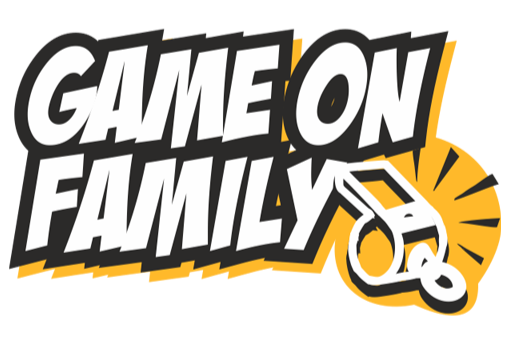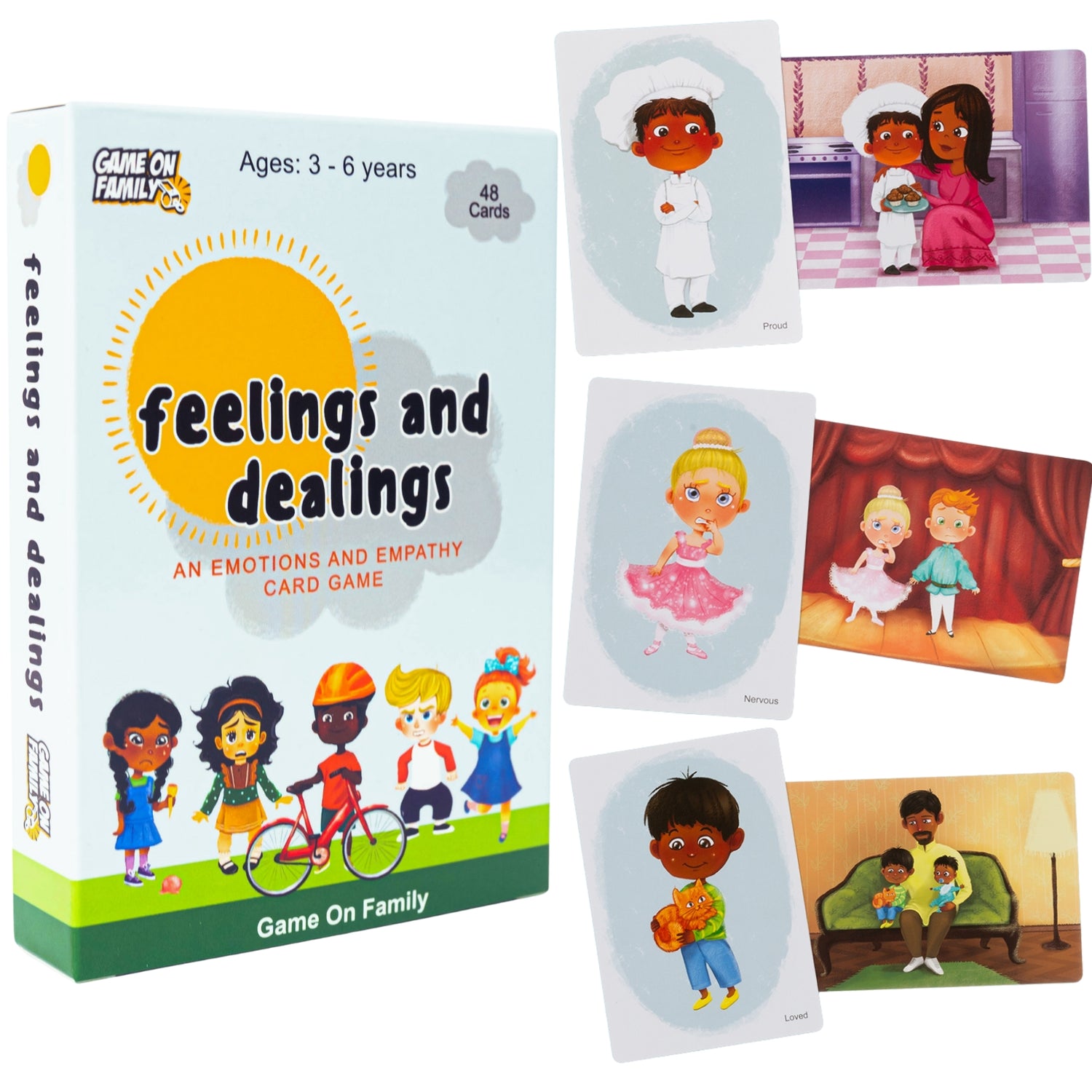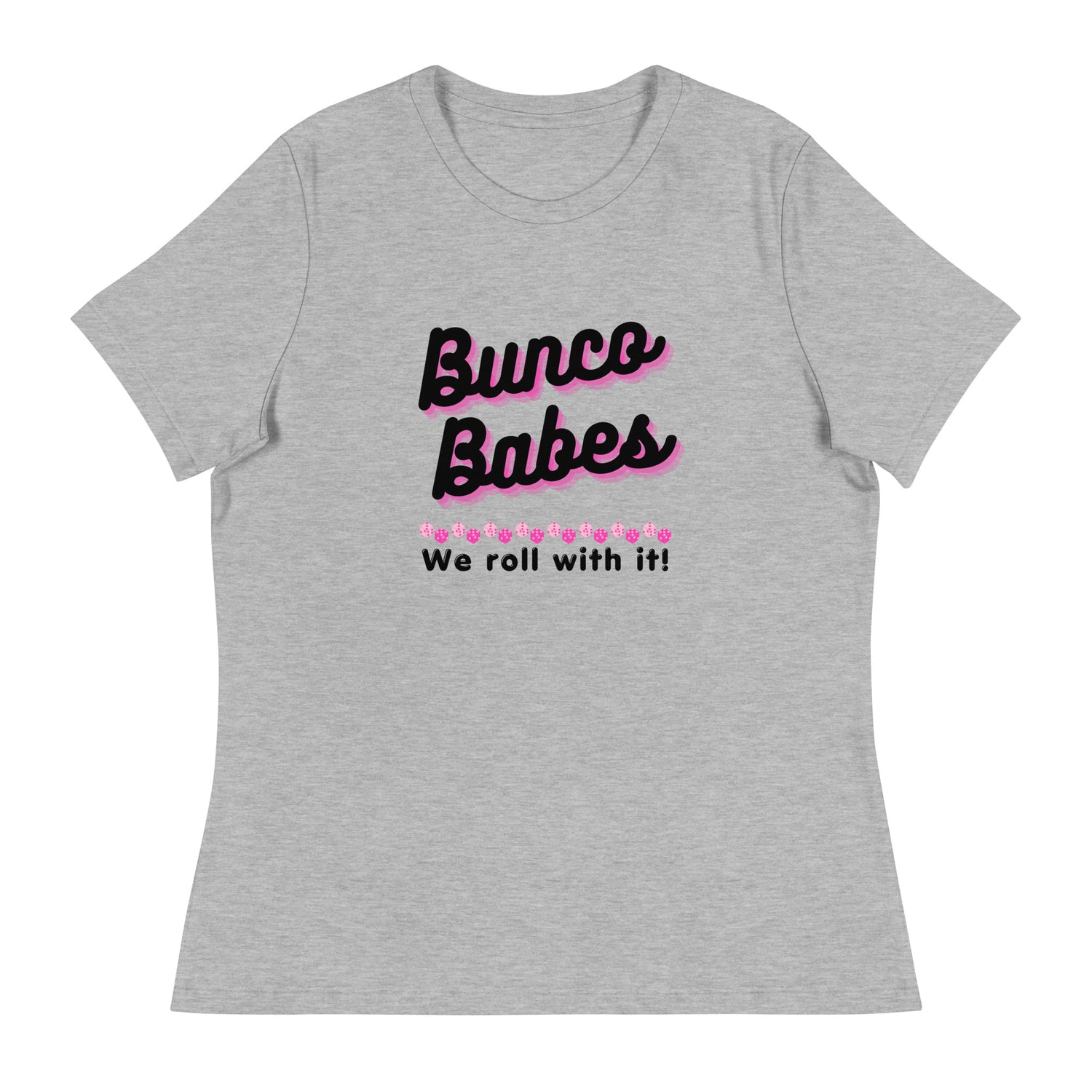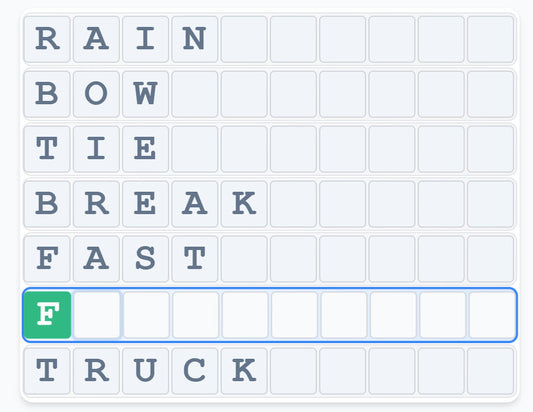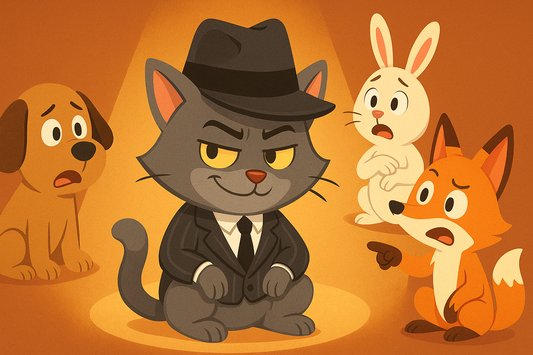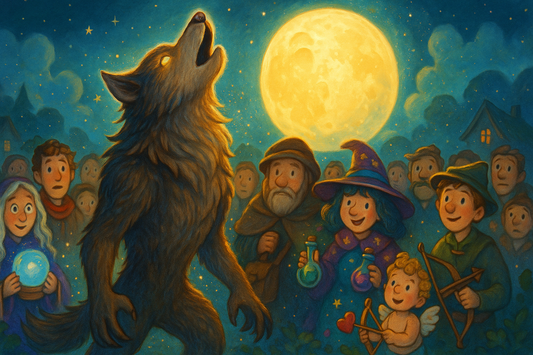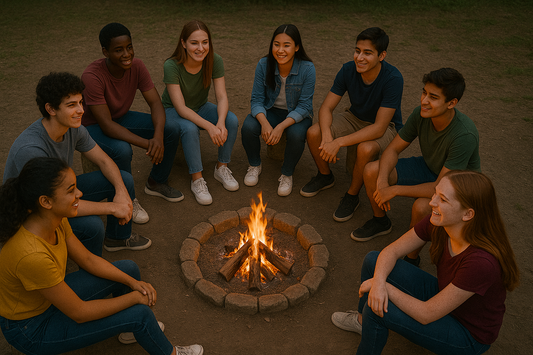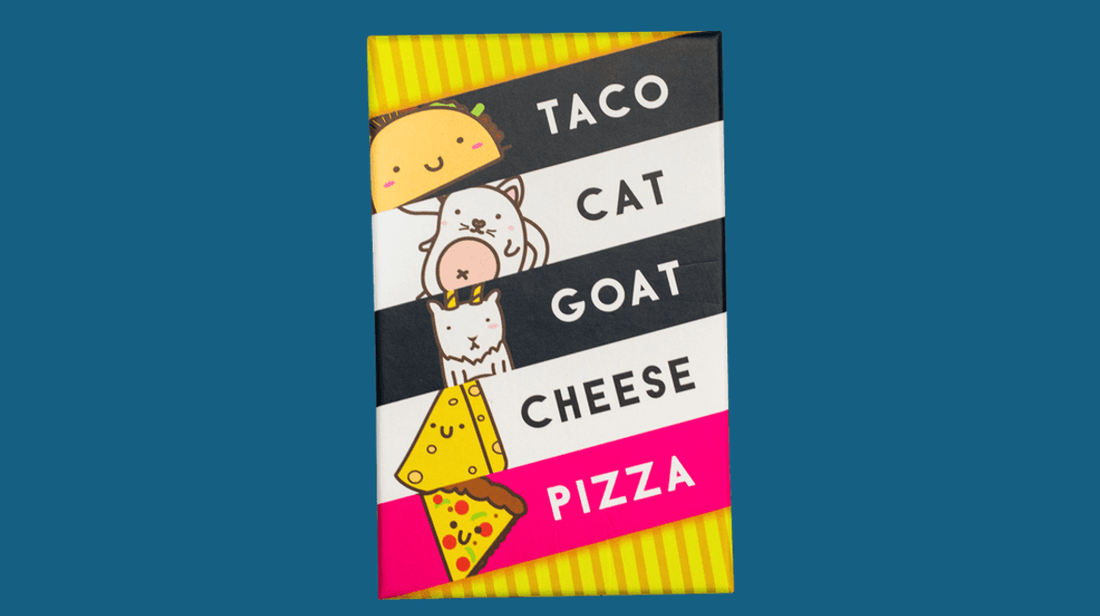
How to Play Taco Cat Goat Cheese Pizza (Party Card Game)
Share
What is Taco Cat Goat Cheese Pizza?
Taco Cat Goat Cheese Pizza is a fast, silly, high-energy card game where players chant five words in order, flip cards into a central pile, and race to slap the pile when a flipped picture matches the word said. It’s easy to teach, super portable, and hilarious for families, friends, and parties.
Objective
Be the first player to empty your draw pile—and resolve any match/action correctly on your final flip.
What You Need
- A Taco Cat Goat Cheese Pizza deck (3–8 players recommended)
- A flat surface for the central pile
How to Play (Step by Step)
Step 1: Gather players and the game
Best with 3–8 players. Sit where everyone can comfortably reach the central pile.
Step 2: Pick a dealer and deal the cards
The player to the dealer’s left goes first; play is clockwise.
- 2–5 players: Deal 12 cards to each player.
- 6+ players: Deal the entire deck out evenly. Each player keeps a face-down draw pile in front of them. Don’t look at your cards.
Step 3: Start the cadence (one word per turn)
On your turn, flip the top card from your draw pile face-out into the central pile (turn it away from you so you can’t peek first) while saying the next single word in order:
Taco → Cat → Goat → Cheese → Pizza → (repeat)
Each player says one word only on their turn; the cadence continues around the table. Keep it steady—no stalling.
Step 4: Resolve the flip (standard cards, action cards, penalties)
A) Standard cards (Taco, Cat, Goat, Cheese, Pizza):
- No match with the word spoken: do nothing; pass to the next player and continue the cadence.
- Match with the word spoken: everyone races to slap the central pile. The last player to slap takes the entire central pile, places it face-down under their draw pile, and starts the next round.
B) Special action cards (do the action, then slap):
- Gorilla: Pound your chest, then slap.
- Groundhog: Knock on the table with both hands, then slap.
- Narwhal: Make a horn above your head, then slap.
If someone slaps early or does the wrong action, that’s a penalty—they take the pile and start the next round.
C) Avoid Penalties:
- No Peeking: Cards must be flipped face-out, not face-in. If a player tries to peek or slow down to check their card first, that’s a penalty—they must take the pile.
- No Flinching: Any incorrect slap or even starting to move toward the pile when you shouldn’t is a flinch. That player must take the pile and forfeit the hand.
(Tip: If two players slap at the same time, the hand that’s lowest on the pile counts as first.)
Step 5: Start the next round with the loser
Whoever took the pile (last to slap, wrong action, peeker, or flincher) begins the next round by flipping and saying “Taco.” Keep the cadence going clockwise.
Step 6: Declare the winner
Play until a player empties their draw pile and correctly resolves any required match/action on that final flip. That player wins!
Rules Summary
- Deal 12 each for 2–5 players; deal all cards for 6+.
- Players keep face-down draw piles; flip face-out into the central pile.
- Chant one word per turn: Taco → Cat → Goat → Cheese → Pizza.
- Match: all slap; last to slap takes the pile and starts next round.
- Action cards: do the move before slapping; wrong/early slap = take the pile.
- Flinching: Any false slap or motion toward a slap when not required = take the pile.
- No Peeking: Flips must be face-out—slowing or sneaking a look = take the pile.
- Winner = first to empty draw pile and resolve their final flip correctly.
Game Details
- Recommended Age: 8+ (younger kids can play, but reflexes matter)
- Players: 3–8 (combine two decks for bigger groups)
- Game Length: 10–15 minutes
Why It’s Good for Families
This game is great for all ages and one of those rare games that’s just as fun for adults as it is for kids. I’ve played it with my kids, and unlike many “kid games,” I’m genuinely laughing and having fun too.
Another reason it works so well: the instructions are super short—just one page. You’re not stuck explaining rules for 20 minutes (which can kill the mood on game night). Instead, you can jump right in, and everyone catches on quickly by playing.
It’s also become the go-to game for my kids (ages 9 & 11) when we visit friends’ or extended family’s houses. They’ll bring it along, and within minutes everyone’s playing—adults, teens, little cousins—because it’s so easy to learn and instantly fun.
And it’s one of the hardest games not to flinch!
- Your brain gets tricked because you’re trying to process both the visual card and the word being spoken—and they don’t always match.
- The game makers are sneaky, too. Sometimes the coloring of a Pizza card looks a lot like Cheese, or they tweak the art just enough to trip you up. You barely notice it—until your hand twitches and you flinch at the wrong time.
And don’t forget the action cards. Gorilla, Groundhog, Narwhal—they add silly fun, but in the excitement, I’ve seen players (myself included) mess up and do the wrong action. It’s always hilarious.
Skills Learned
- Focus & attention (listening to chant + watching cards)
- Reflexes & reaction time
- Pattern recognition
- Impulse control (avoiding flinches)
- Sportsmanship (laughing off failures)
Strategy
- Don’t worry about being first—just don’t be last: Except in the final round, the goal isn’t speed, it’s survival. You don’t have to be the fastest to slap—just avoid being the slowest. If you see someone else start to slap, go for it too. There’s no penalty for being the second or third hand down.
- Stay loose, not obvious: Keep hands near the pile, but don’t hover or you’ll flinch.
- Use rhythm as a weapon: A steady cadence catches people who drift or slow down.
- Control the table: If you lost the last round, use your chance as the starter to shift the tempo.
- Track other players’ cards: If a player recently picked up specialty cards, you might know what they still hold when they’re down to their last card or two. Use that to anticipate what’s coming.
- Anticipate actions: Knowing Gorilla, Groundhog, and Narwhal cold is a way to get ahead when others panic.
- Punish leaders: Just like in Uno, targeting the “winning” player by staying sharp and letting them get buried under piles keeps the game balanced.
- Endgame slap defense: When a player is down to their last card, they must slap correctly to win. Be ready to beat them to the pile—or even risk a flinch—if it might block their victory.
(And honestly, the best moments in our family are when someone flinches and gets gleefully called out—those “gotcha!” laughs are priceless.)
Variations
Popular House Rules
- Double-Slap: Matches and actions require two slaps (last to complete both takes the pile).
- Penalty Plus: Flinchers take the pile plus 3 extra cards from the deck.
- Silent Table: Only the flipper says the word—others must stay quiet.
- Speed Mode: Faster chant; no slow flips.
- Left-Hand Only / No Hover: All slaps must be with the left hand or from laps.
Spin-Offs & Special Editions
- On the Flip Side (rule twists and new characters)
- Holiday Editions (Christmas, Halloween with themed art/actions)
Common Questions (FAQ)
How many players can play?
3–8 is recommended; you can combine two decks for larger groups.
Who starts the next round?
The player who took the pile (last to slap, wrong action, peeker, or flincher).
What counts as a flinch?
Slapping when it’s not a match, slapping before completing an action, slapping early, or even just starting to move toward the pile.
What happens if someone peeks at their card before flipping?
That’s a penalty. The player must take the pile and start the next round.
What if two players slap at the same time?
The hand lowest on the pile counts as first.
Can I peek before I flip?
No. Cards must be flipped face-out into the center so everyone sees them at the same time.
Can we use two decks?
Yes—great for big parties. Add a house penalty rule to keep things moving.
